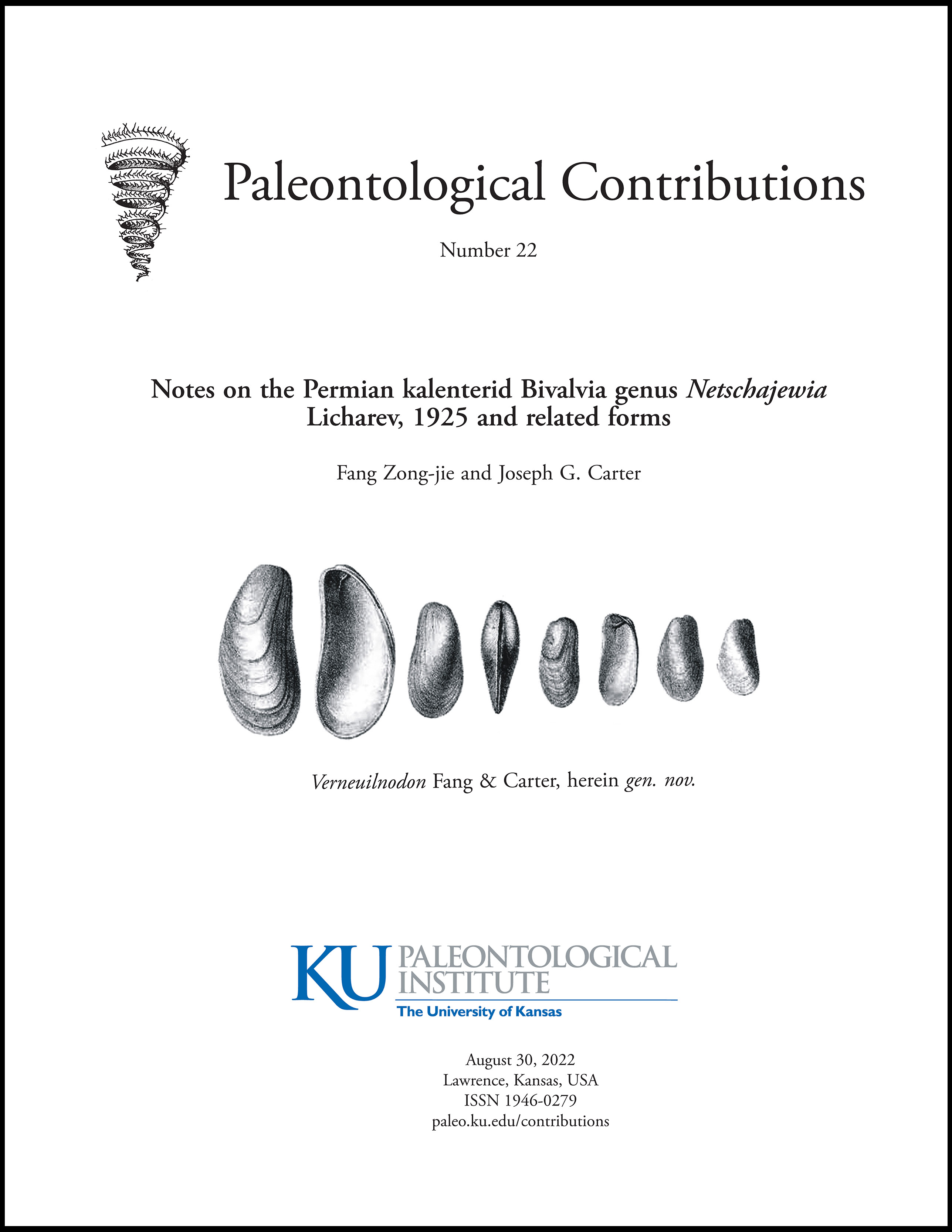Notes on the Permian Kalenterid Bivalvia Genus Netschajewia Licharev, 1925 and Related Forms
DOI:
https://doi.org/10.17161/1808.33352Abstract
The identity of the Permian kalenterid Netschajewia Licharev, 1925 has been uncertain because its author indicated it could be regarded as a replacement name for the preoccupied Modiolodon Netschajew, 1894 yet Newell (1957) treated Netschajewia as a subgenus of Stutchburia Etheridge Jr., 1900, and designated a type species different from that proposed by La Rocque and Newell (1969) for Modiolodon Netschajew. Netschajewia is confirmed as a replacement name for Modiolodon, thereby invalidating Newell’s (1957) erroneous type designation (misidentified type species) for Netschajewia. The names Ivanovia Astafieva-Urbajtis in Astafieva-Urbajtis and Ramovš, 1978 and Astafia Goncharova, 2013 are objective junior synonyms of Netschajewia. Netschajewia is definitely known only from its type species and one additional Permian species. It is assigned to the kalenterid subfamily Myoconchinae. The genus Verneuilnodon Fang & Carter, gen. nov. (subfamily Healeyinae Hautmann, 2008, reduced in rank herein from family Healeyidae) is proposed for Permian Mytilus (Modiola) pallasi de Verneuil, 1845, as restricted herein. The new Permian species, Kasimlara? antiqua (subfamily Healeyinae) is proposed. The wide circulation of Chavan’s (1969) republication of Newell’s (1957) erroneous type designation for Netschajewia means that modern references to this genus should be reevaluated.
Downloads
Published
Issue
Section
License
Copyright (c) 2022 Zong-jie Fang, Joseph G. Carter

This work is licensed under a Creative Commons Attribution 4.0 International License.
- Authors retain copyright and the works are licensed under a Creative Commons Attribution 4.0 License that allows others to share the work with an acknowledgement of the work's authorship and initial publication in this journal.
- Authors are permitted and encouraged to post their work online (e.g., in institutional repositories or on their website) prior to and during the submission process, as it can lead to productive exchanges, as well as earlier and greater citation of published work (See The Effect of Open Access)


